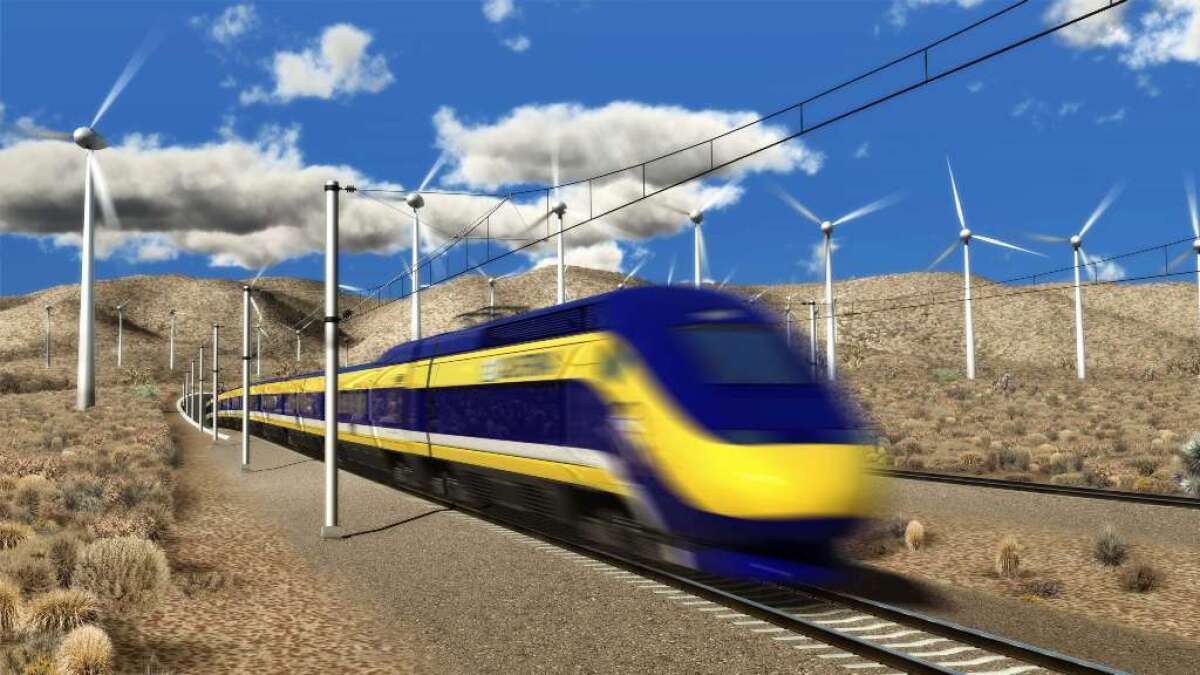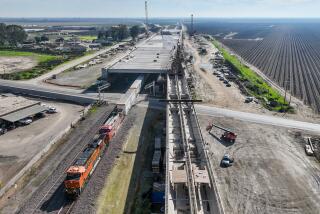Op-Ed: High-speed job creation for California

- Share via
During the recent election season, the California high-speed rail project came under attack once again, with candidates vowing to defund it. “Let’s focus on real job creation,” said GOP gubernatorial candidate Neel Kashkari in one television commercial, as he smashed a toy train.
Do Kashkari and others have a point? Is the multibillion-dollar project unlikely to produce good jobs?
I believe they are wrong, as long as the state remains focused on keeping job creation as a principal goal of the program.
The California High-Speed Rail Authority has already negotiated a comprehensive “construction careers” program with the State Building and Construction Trades Council of California, one that guarantees access to apprenticeship programs for disadvantaged and unemployed workers, prioritizing those from the state’s poorest areas, including Fresno and the Central Valley.
The program was modeled after one developed by L.A.’s Metro in 2011 that has put thousands of disadvantaged people into union apprenticeship programs. Those who finish are prepared for permanent careers as electricians, pipe fitters or sheet-metal workers. The high-speed rail construction careers program will similarly train thousands of Californians and then put them to work designing and constructing the rail line.
Until late last week, the rail authority also had an excellent plan in place to bring the manufacturing of its high-speed rail cars to the United States, which would create thousands more American jobs.
Currently, there is not a single company operating in the United States capable of manufacturing the high-tech aluminum trains the rail system will use. To address that issue, California’s rail authority decided to team up with Amtrak, which was also in the market for new high-speed trains. The idea was that the two agencies together would wield enough purchasing power to create a market for U.S.-manufactured rail cars.
In January, they put out a request for proposals from manufacturers interested in building the high-speed trains domestically.
The request for proposals required companies interested in bidding to spell out exactly how many U.S. jobs they anticipated creating, as well as what kind of outreach they would do to hire unemployed workers and what kind of wages they would pay. The winning bidder would have been expected to purchase 100% of its major rail car components from U.S. factories, which would have led to additional American jobs making those parts.
On Friday, though, Amtrak and the rail authority canceled their joint manufacturing plan, having concluded that the needs of the two agencies were too different to be addressed in a single contract. Amtrak runs its high-speed trains on aging rail lines in the Northeast that can accommodate trains going no more than 160 mph. California is looking for trains that will go up to 220 mph.
The California High-Speed Rail Authority’s plans will now have to be rethought. But Californians should urge the agency to continue its commitment to building the trains in the United States. The agency should also require, as the joint proposal with Amtrak did, that companies bidding for the job clearly spell out their plans for creating good U.S. jobs and for providing opportunities for disadvantaged Americans.
Ultimately, the proof of the California High-Speed Rail Authority’s commitment to job creation lies with its final choice of manufacturer and that manufacturer’s approved job-creation strategy.
But despite the qualms voiced about the high-speed rail line, it’s reasonable to expect that if the project sticks to its core commitments, it could become one of the greatest economic development programs in the state’s history, providing both a train system that will benefit Californians for generations and tens of thousands of new, good U.S. and California jobs.
Madeline Janis is director of the Jobs to Move America Project and the national policy director of the Los Angeles Alliance for a New Economy.
More to Read
A cure for the common opinion
Get thought-provoking perspectives with our weekly newsletter.
You may occasionally receive promotional content from the Los Angeles Times.






